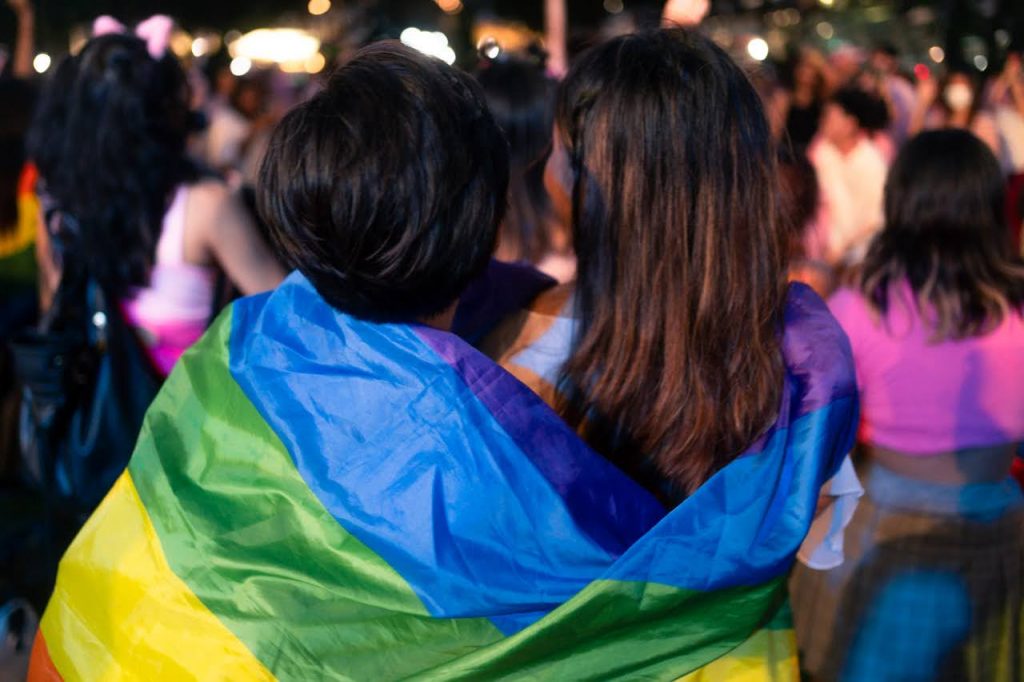Top image: Beh Chia Lor / Facebook
A few days ago, a commuter made headlines for attempting to pry open an MRT door while the train was moving. And it wasn’t her first time.
SMRT initially identified her as a “male commuter who was in a dress.” Subsequently, a few more articles popped up covering the incident, all referring to her as a man despite her clarifications in interviews that she identifies as a woman.
Over on Reddit, there was also speculation about her mental health. Some asked if she was “suicidal” or “having a psychotic break”.
It’s astounding—the hurdles taken to misgender her despite her clarifications, and the way she’s become tabloid fodder.
The whole thing hasn’t been easy for Vanessa, the woman in the videos. In interviews with the media, Vanessa mentioned that she suffers from multiple personality disorder and mania. She is also autistic. When RICE approached her for comment, she only said that life lately was “extremely difficult” and she was having “negative thoughts”.
Now comes the question: What do these viral social media videos achieve other than hits? The resulting video and online comments are not just pushed onto the general populace’s feeds, but also that of the video subject, after all.
And what of the trauma inflicted when the public and media make assumptions about the video subject’s mental health and gender?

An Unwanted Spotlight
It goes without saying that prying open an MRT door is wrong. Vanessa has now been charged with causing a public nuisance. Some might even point to Vanessa’s actions as justification to put her on blast online.
According to Associate Professor Edson Tandoc Jr of Nanyang Technological University (NTU), social media confers anyone with an internet connection a potentially mass audience.
“We’ve also been seeing instances of online vigilantism and examples of cancel culture in Singapore, which definitely shape how users view social media as platforms and what these platforms can do,” he tells The Straits Times. Examples of this include the posts of people refusing to wear masks or observe social distancing protocols during the pandemic, he adds.
Enforcing societal norms is one thing, but it’s all too easy for people to take it too far.
For instance, Kurt Tay was recently heckled upon exiting the court. Tay had done extremely problematic things. Perhaps the most egregious of his misdeeds—and the one that landed him in court—is allegedly distributing a woman’s intimate video in a Telegram group chat. People ran after him, jeering and laughing as they stuck their phones in his face. Videos of Kurt’s court appearance later made their way onto social media, and even a Telegram group dedicated to updates on his activities.
A handful felt the heckling was justified. Others said it was unnecessary and immature for someone to be hounded during an already tough period in their life.
One YouTube comment read: “The irony of those juveniles taking videos to further publicly shame the subject is that they became the embarrassing subjects of this video.”
While people should be held accountable for their actions, there’s a fine line between that and bullying. Also worth examining is the intention behind the public shaming or hounding. Are you really trying to hold the other person accountable? Or is it more about feeding your own moral superiority?
When Gender and Mental Health Enter the Picture
When we see someone acting strangely or erratically in a public space, most likely our first thought is: “Is there something wrong with them?”
Our next is to record it and upload it online for posterity. When such incidents make their way onto social media or tabloids, the clickbaity headlines invariably ensue.
Even among the more reputable publications, such as our national broadsheet, though, there’s also a troubling insistence on referring to Vanessa as a man. Sure, court documents state Vanessa’s gender as male. But there could be more sensitivity exercised in cases where newsmakers’ gender identity and their official documents may not line up. Accuracy in media reporting is important, but using gender-neutral language or using the individuals’ preferred pronouns doesn’t discount that.
Oftentimes, articles also pepper in details about the person involved, including their mental health diagnoses. At the mention of both mental health issues and gender, Trans activist and mental health advocate Lune Loh warns that it can perpetuate the harmful notion that one’s gender issues are the reason for their behaviours.
She explains, “This may not be necessarily true, as in this situation, the person’s gender identity is again not directly linked to their actions.”
When certain groups aim to depict transgender people as threats to society, it “opens the space for further harassment, abuse, profiling, incarceration, the loss of livelihoods, and our deaths,” she adds.
A non-binary social worker, who wishes to remain anonymous, concurs. They add: “The use of he/him pronouns and the identification of this commuter as male, despite their feminine gender expression, feels like a blatant attempt to emphasise that these are the actions of a transgender person.”
Reforming Public Discourse

Lune and many other transgender people already face greater mental health risks due to the trauma they face. Beyond misgendering, they can be harassed verbally, physically, sexually. “We can be kicked out of our house by our parents. We can be denied jobs or positions simply for being transgender”, Lune says.
This is far from the first time transgender people have been framed in a negative light in the media. Last month, a transgender domestic worker was jailed for abusing his employer. Lune tells us she feels that the articles on the incident seemed to suggest his aggression was correlated to his transition into a man. It’s a slippery slope—this gendered implication may cause panic against transgender people or alienate them in society.
The latest viral videos and headlines might be dinner table conversation for most of us. But behind the headlines lie real lives and genuine struggles.






